Morocco’s rich history and diverse heritage are reflected in its architecture and design, which blend styles and influences from various cultures. The intricate zellige mosaics, grand palaces, and mosques are just a few examples of the country’s remarkable architectural wonders that have captivated people worldwide. We will take a closer look at the beauty and significance of Moroccan architecture and design and how they have inspired contemporary interiors. From the vibrant colors and patterns to the use of natural materials, join us on a journey through the fascinating world of Moroccan design.
Moroccan Architecture: A Brief History and Overview
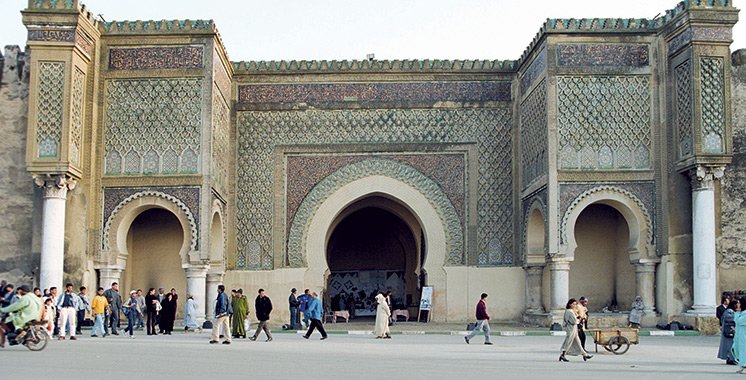
Moroccan architecture is a captivating mix of styles and cultures, reflecting the country’s unique history and heritage. The Berbers constructed the earliest examples of Moroccan architecture using earth, wood, and stone during the pre-Islamic period. After the arrival of Islam in the 7th century, Moroccan architecture underwent significant changes, resulting in the construction of mosques, madrasas, and other religious buildings.
During the medieval period, Morocco experienced great prosperity and artistic creativity, leading to remarkable architectural achievements like the Koutoubia Mosque in Marrakech, the Hassan Tower in Rabat, and the Bab Mansour Gate in Meknes. These stunning buildings featured intricate geometric designs, zellige tilework, and ornate calligraphy, which became defining characteristics of Moroccan architecture.
The rise of the Saadian dynasty in the 16th century brought about a new era of architectural innovation. The Saadian rulers built luxurious palaces and mausoleums adorned with intricate plasterwork, carved wood, and colorful tiles. The El Badi Palace in Marrakech and the Saadian Tombs are famous examples of Saadian architecture.
In the 17th and 18th centuries, the Alaouite dynasty built impressive monuments and palaces. Incorporating European elements into their architecture, the Alaouite rulers created a unique Moroccan-European hybrid style, reflected in buildings like the Royal Palace in Fes and the Hassan II Mosque in Casablanca.
Modern architects continue to incorporate traditional Moroccan elements into their designs while experimenting with new materials and techniques. Moroccan architecture remains an essential and enduring part of the country’s cultural heritage, with its rich history and diverse cultural influences continuing to inspire and captivate visitors worldwide.
The Diversity of Moroccan Architecture: From Berber to Islamic Styles
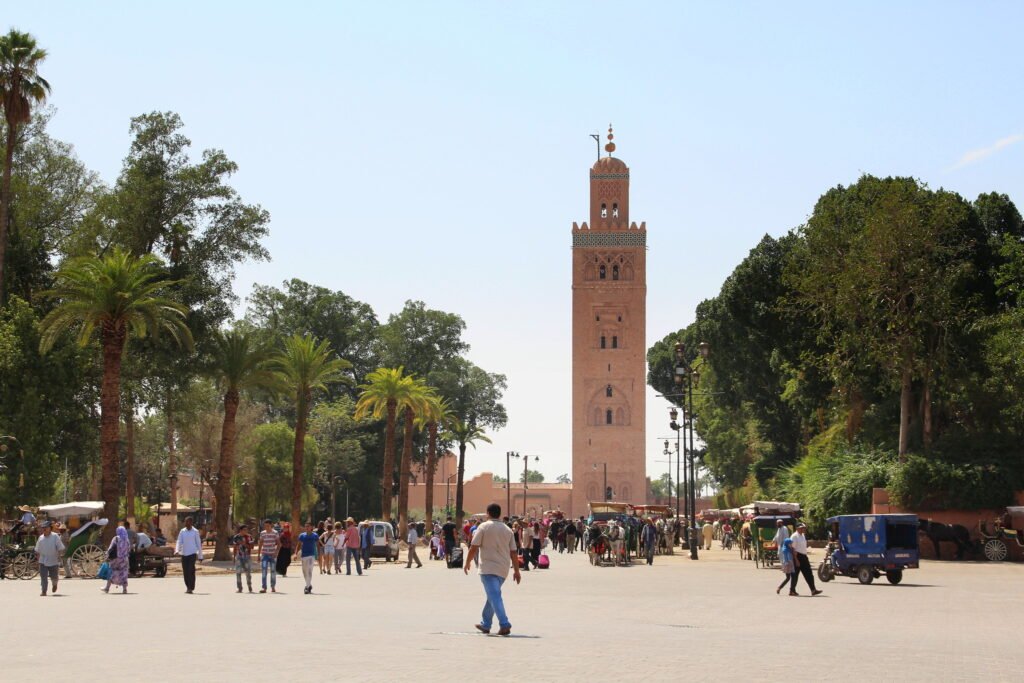
Moroccan architecture is a rich tapestry of different cultures and styles that have left their mark on the country’s heritage. Berber culture is one of the most significant influences on Moroccan architecture, with its unique elements like flat roofs and small windows contributing to the distinctive style created using locally sourced materials such as mud and stone. After the arrival of Islam in Morocco, a new type of architecture emerged, which blended Islamic and Berber elements. This style is characterized by geometric designs and calligraphy, which adorn the exteriors and interiors of buildings in Islamic architecture.
The influence of other cultures is also evident in Moroccan architecture. Spanish, French, and Moorish elements have all shaped the country’s architectural landscape. The Moorish style, in particular, has significantly influenced Moroccan architecture, as it was brought to the country by the Almohad dynasty in the 12th century. The Koutoubia Mosque in Marrakech is a masterpiece of Moorish architecture and an iconic example of Islamic architecture in Morocco.
Moroccan architecture exhibits significant regional variation, with unique styles and features characterizing each area. For example, the narrow alleys and red mud walls of the southern city of Taroudant are distinct from the ornate balconies and colorful tiles of the northern city of Tetouan. The diversity of Moroccan architecture is a testament to the country’s rich cultural heritage and history.
Overall, Moroccan architecture reflects the many influences that have shaped the country over the centuries, from Berber to Islamic styles and the Sahara Desert to the Atlantic coast. It is a unique blend of tradition and innovation that continues to evolve and inspire architects and designers worldwide.
A Closer Look at Moroccan Riads: The Classic Houses with Modern Appeal
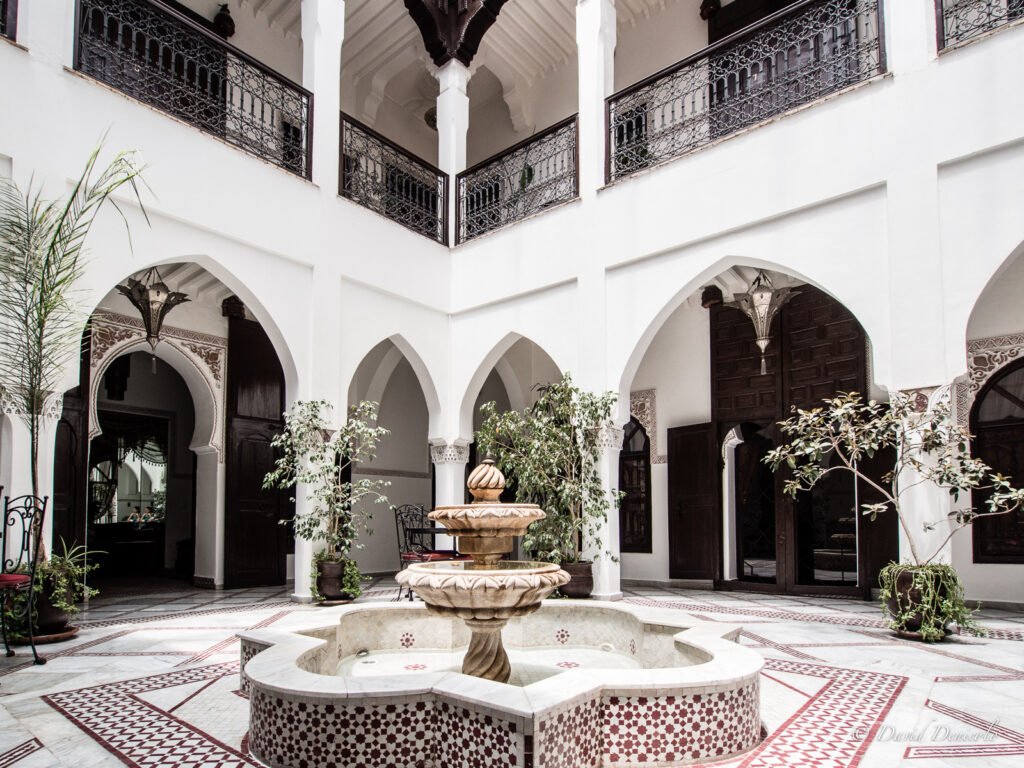
One of the most unique aspects of Moroccan architecture is the riad, a traditional house with an interior courtyard or garden. Riads are typically rectangular or square and feature a central yard or garden, often adorned with a fountain or small pool, with rooms around it. Nowadays, many riads have been converted into guesthouses or boutique hotels, allowing visitors to experience the elegance and serenity of these classic Moroccan homes.
Common areas such as dining rooms, living rooms, and libraries are typically located on the ground floor of a riad. In contrast, bedrooms are on the upper floors, often with balconies overlooking the courtyard. One of the most distinctive features of riads is the intricate tilework and plasterwork found throughout the house. Colorful tiles or intricately carved plaster covers walls, floors, and ceilings, creating a stunning visual effect. While steeped in tradition, many riads have modern amenities such as air conditioning, Wi-Fi, and en-suite bathrooms. This blend of classic and contemporary design makes riads a popular choice for visitors seeking to experience the beauty of Moroccan architecture while enjoying modern comfort and convenience.
Overall, riads provide a unique and authentic glimpse into Moroccan culture and architecture and are a must-see for anyone visiting Morocco. With their classic design and modern amenities, these historic homes offer visitors an unforgettable experience.
Moroccan Design: The Art of Mosaic and Zellige
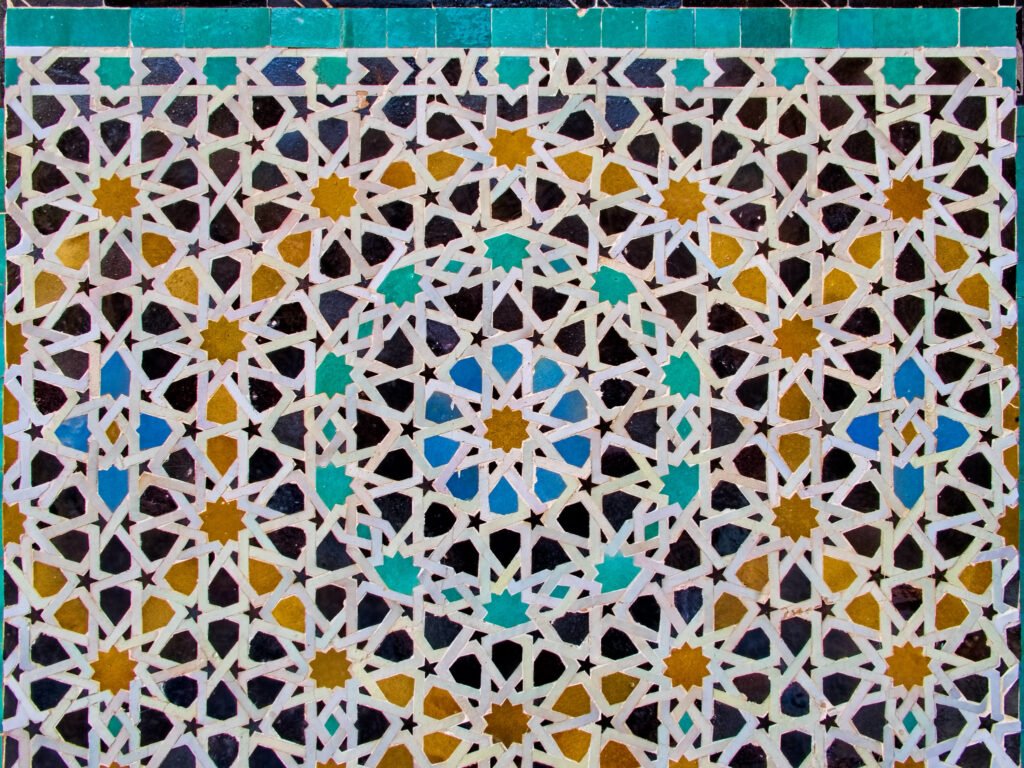
Zellige, the intricate and colorful mosaic design, is one of the hallmarks of Moroccan art and architecture. It dates back to the 10th century and is widely used in traditional and modern designs. Artisans hand-cut clay or ceramic tiles into various shapes and sizes, arranging them in intricate patterns to create stunning works of art.
Using bold and vibrant colors, such as blue, green, yellow, and red, is another distinctive feature of Zellige. The colors are often arranged in geometric patterns, creating a mesmerizing visual effect. Moroccan design also employs traditional techniques, including Tadelakt, polished plaster, and carved woodwork.
Moroccan design blends Islamic and Berber influences, emphasizing elaborate patterns and geometric shapes. This style is reflected in traditional Moroccan textiles, pottery, modern furniture, and lighting. In recent years, Moroccan design has gained popularity worldwide. Incorporating traditional elements like Zellige tiles can add an exotic flair and timeless elegance to any design.
Moroccan design is a testament to the country’s rich cultural heritage and is a must-see for art and design enthusiasts. Whether it’s the intricate patterns of Zellige or the delicate carvings of woodwork, the beauty of Moroccan design is sure to leave a lasting impression.
The Significance of Moroccan Architecture and Design in Islamic Art and Culture
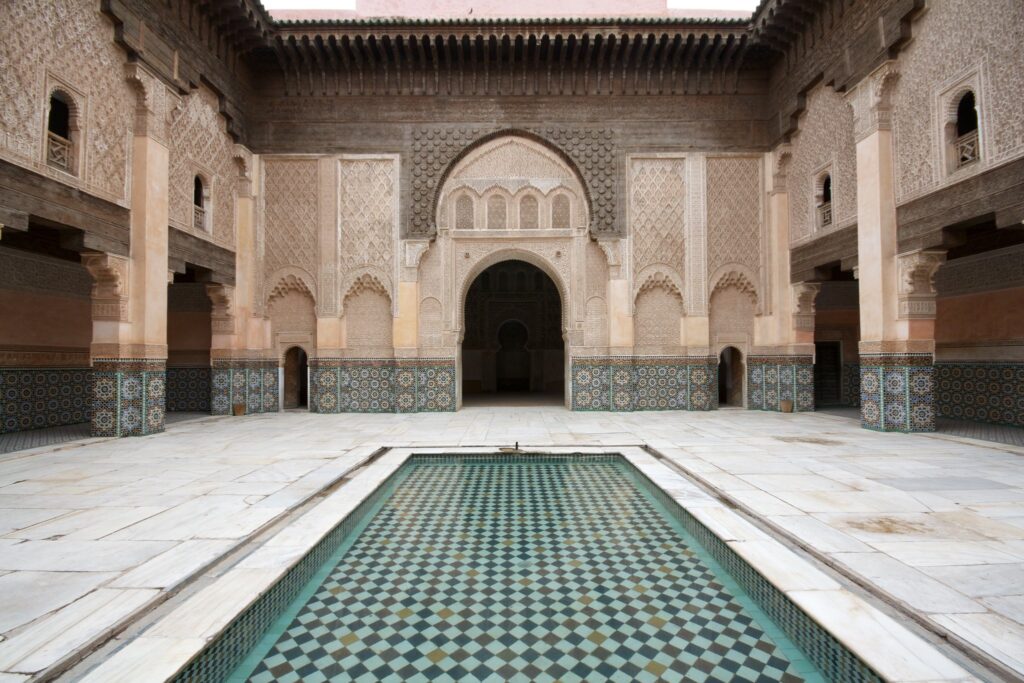
Islamic art and culture heavily influence the architecture and design of Morocco, with their intricate patterns and motifs adorning many buildings. The Koutoubia Mosque in Marrakech stands as one of Morocco’s most notable examples of Islamic architecture, with its minaret featuring intricate geometric patterns and calligraphy that inspired the Giralda Tower in Seville, Spain. Another remarkable example of Islamic art and culture in Moroccan architecture is the Ben Youssef Madrasa, renowned for its exquisite decoration, including carved plaster, zellige tilework, and intricate woodwork.
The intricate tilework and colorful textiles used in Moroccan homes and public buildings also reflect Islamic art and culture in their design. This incorporation of traditional elements adds to Morocco’s unique charm and beauty and inspires many architects and designers in the country.
Overall, Islamic art and culture have significantly impacted Moroccan architecture, making it one of the most distinctive and captivating in the world. The intricate patterns and motifs reflect the country’s rich cultural heritage and are a must-see for art, architecture, and culture visitors.
Morocco’s Modern Architectural Marvels: A New Era in Design
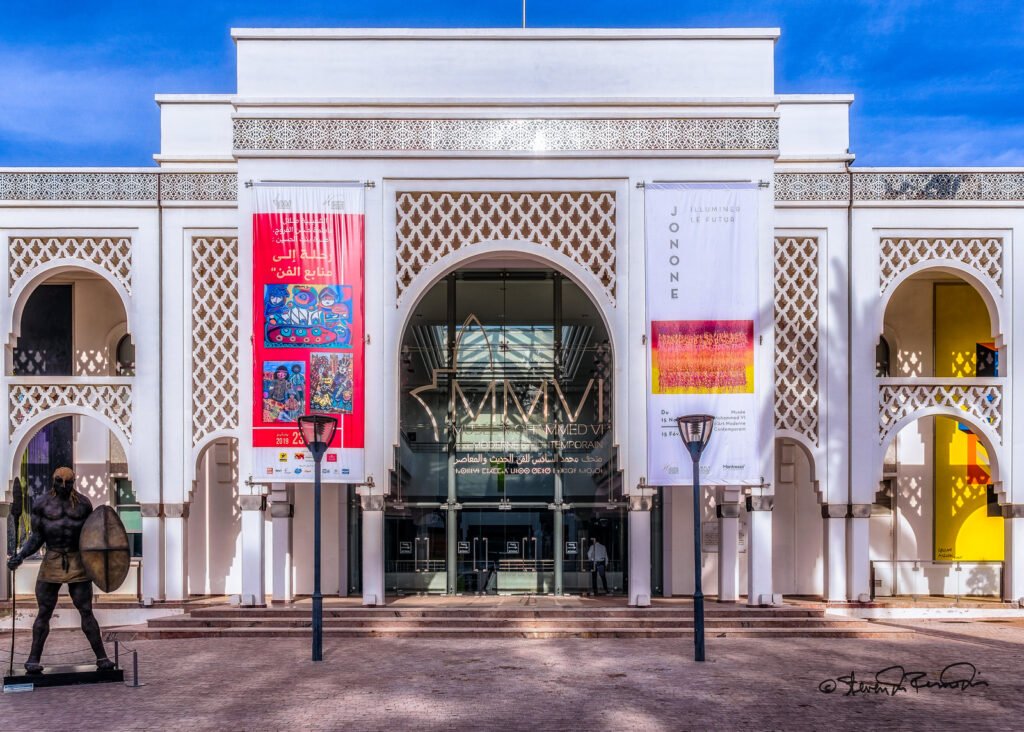
Morocco’s architecture and design have evolved, incorporating contemporary elements while retaining traditional aspects. Moroccan architects are creating stunning structures that blend the country’s past and present.
One such modern marvel is the Casablanca Finance City Tower, designed by Tarik Oualalou. Its unique shape and glass facade reflect the city’s dynamic atmosphere and make it a remarkable feat of engineering. The tower is now the tallest building in Africa, standing at 820 feet tall.
Another example of modern Moroccan architecture is the Mohammed VI Museum of Modern and Contemporary Art in Rabat. French architect Jean-Francois Bodin designed this museum, contrasting traditional Islamic architecture with a sleek, minimalist design. However, it still incorporates elements of Moroccan design, such as light and shadow, to create a sense of depth and intrigue.
Morocco’s modern architectural wonders also include the Rabat-Salé International Airport Terminal 1, designed by Ricardo Bofill and Mohamed Amine Siana, and the Ouarzazate Solar Power Station, designed by Snøhetta.
These structures are changing the skylines of Moroccan cities and contributing to the country’s economic and cultural growth. As Morocco continues to honor its rich heritage while looking toward the future, its architecture, and design will continue to captivate and inspire visitors worldwide.
Moroccan Palaces and Gardens: The Splendor of Imperial Cities
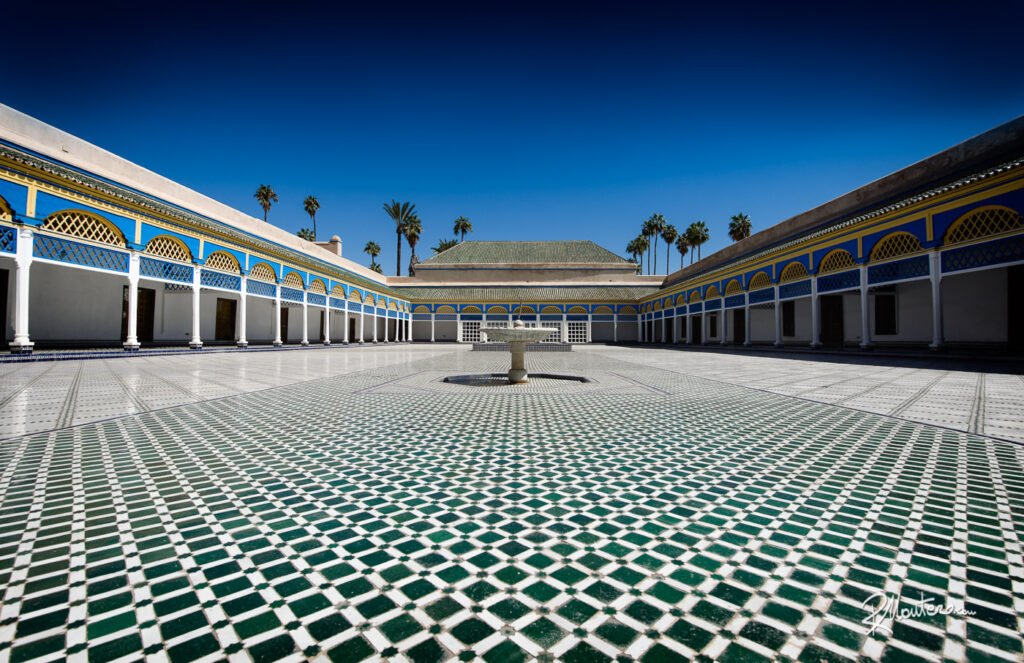
Morocco’s magnificent palaces and gardens are some of its most impressive architectural wonders, showcasing its rich cultural and historical heritage. The imperial cities of Marrakech, Fez, and Rabat are home to many breathtaking structures.
In the late 19th century, the powerful vizier Si Moussa commissioned Marrakech’s Bahia Palace, now one of Morocco’s most famous. The palace’s intricate zellige tilework, stucco carvings, and verdant gardens testify to the country’s exquisite craftsmanship and attention to detail.
Moroccan gardens are also renowned for their beauty, intricacy, and palaces. Fez’s Royal Palace, which the Moroccan King uses for visits, boasts a grand entrance with massive brass doors and a stunning mosaic fountain. Visitors can marvel at the elaborate plasterwork, carved cedar wood, and vibrant tiles.
The Jardin Majorelle, designed by Jacques Majorelle, is Morocco’s most well-known garden. It is in Marrakech and features a striking blue villa, cacti, exotic plants, and a serene, reflective pool. Other notable parks include the Menara Gardens in Marrakech, which offer stunning views of the Atlas Mountains, and Rabat’s Andalusian Gardens, built in the 12th century and adorned with beautiful fountains and orange trees.
Visiting these palaces and gardens is a must for anyone interested in experiencing the splendor of Morocco’s imperial cities. With their stunning architecture, breathtaking gardens, and rich history, they offer a glimpse into the country’s fascinating past and present.
Morocco’s Iconic Mosques: The Heart of Islamic Architecture
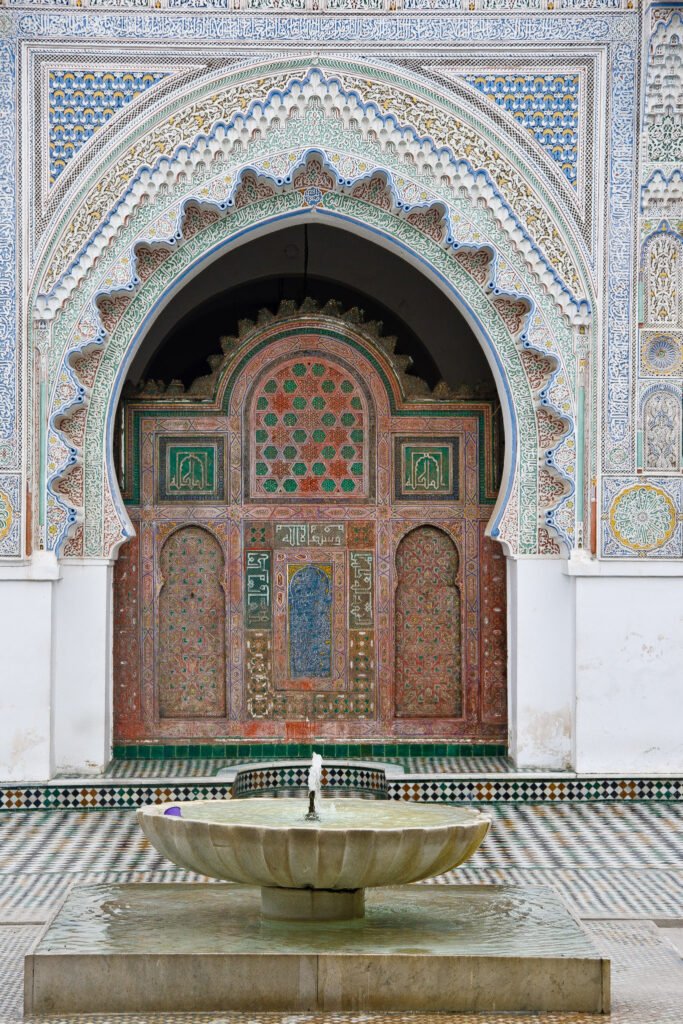
Morocco boasts exceptional mosques that embody the country’s unique cultural heritage and religious devotion. Among them, the Hassan II Mosque in Casablanca is the most famous, renowned for blending traditional Moroccan features with contemporary design. Its breathtaking minaret rises an impressive 210 meters tall.
Likewise, the Koutoubia Mosque in Marrakech is another exquisite example of Moroccan mosque architecture. Its classic Islamic 12th-century design features a striking minaret that served as a model for other mosques in the region. The mosque is surrounded by gardens and palm trees, enhancing its serene atmosphere.
The Al-Qarawiyyin Mosque in Fez, founded in the 9th century, is the oldest university in the world and a masterpiece of Moroccan mosque architecture. Its diverse Andalusian, Moroccan, and Islamic styles reflect its rich history, and the mosque’s mosaic tilework, carved wood, and stucco plaster make it a visual spectacle.
Not only are Moroccan mosques places of worship, but they also serve as significant cultural and historical symbols, affirming the country’s architectural heritage and profound connection to Islamic culture and history.
Moroccan Architecture and the French Influence: A Mix of European and African Styles
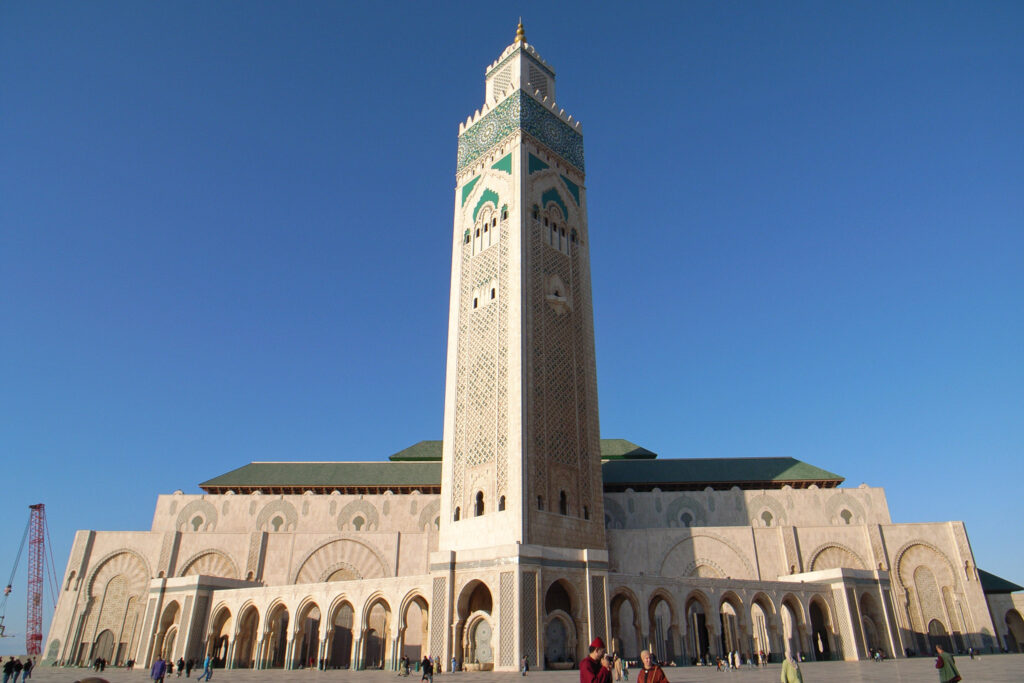
Moroccan architecture is a fascinating blend of traditional and modern styles. During the 20th-century French colonization of Morocco, European architecture and design merged with conventional Moroccan techniques, creating a unique fusion now a prominent feature of Moroccan architecture and design.
Public buildings such as government buildings, hotels, and theaters are excellent examples of this blend. French influences such as Art Deco, Neo-Moorish, and Neo-Classical styles are evident in the design of these buildings. The enormous Hassan II Mosque in Casablanca, completed in 1993, is an impressive example of this fusion. The mosque combines traditional Moroccan elements like zellige tilework and ornate calligraphy with modern features like a retractable roof.
This blending of European and African styles also extends to private residences and commercial buildings. Wrought-iron balconies and stucco facades mix with traditional Moroccan details like ornate tilework and arched doorways, resulting in a captivating architectural and design style that attracts tourists and designers worldwide.
Today, it is common to see hotels, restaurants, and other commercial buildings designed with a blend of Moroccan and European styles, reflecting the country’s rich cultural heritage and modern sensibilities. This unique mix of styles creates a visually stunning and culturally significant architectural style that is a hallmark of Moroccan design.
Moroccan Architecture and Design: Inspiration for Contemporary Interiors
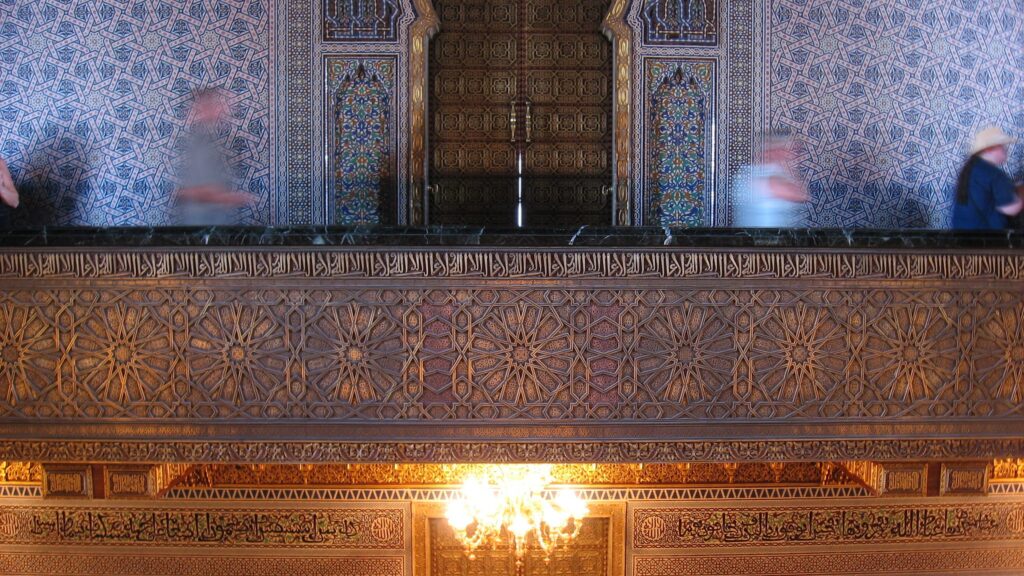
Moroccan architecture and design are more than just impressive buildings and landmarks. They are also a significant source of inspiration for interior design. Moroccan-inspired interiors combine traditional and modern elements to create a cozy and inviting atmosphere that has influenced contemporary interior design.
One of the most popular design elements in Moroccan-inspired interiors is the use of bright colors and intricate patterns. Design enthusiasts typically incorporate rich red, orange, and gold hues on walls, textiles, and accessories to add warmth and vibrancy to the space. Moroccan tiles, rugs, and materials often feature geometric patterns that add a unique touch to any room.
Decorative metalwork is another hallmark of Moroccan-inspired interiors. Statement pieces like intricate ironwork and brass lanterns can be found in living areas, dining rooms, and bedrooms. Not only do they add to the overall aesthetic, but they also provide ambient lighting to create a cozy atmosphere.
Moroccan interiors are also known for featuring low-seated seating areas like poufs and floor cushions. These comfortable pieces of furniture create a relaxed and casual atmosphere, perfect for lounging and socializing.
Finally, natural elements like wood, stone, and plants are commonly incorporated into Moroccan-inspired interiors. Handcrafted wooden furniture and carved wooden screens add warmth and texture to a room, while plants add a touch of greenery and bring life to the space.
Conclusion
Morocco’s architecture and design styles are a stunning display of its cultural legacy and history. It’s a mix of Berber, Islamic, and European influences that inspire architects and designers worldwide. Tourists flock to Morocco to witness its allure. Its intricate details, like motifs and calligraphy in palaces and mosques, and the colorful patterns of zellige and mosaic tiles create a mesmerizing experience. If you’re a design enthusiast or a traveler, Morocco offers an unforgettable adventure through its art and history.
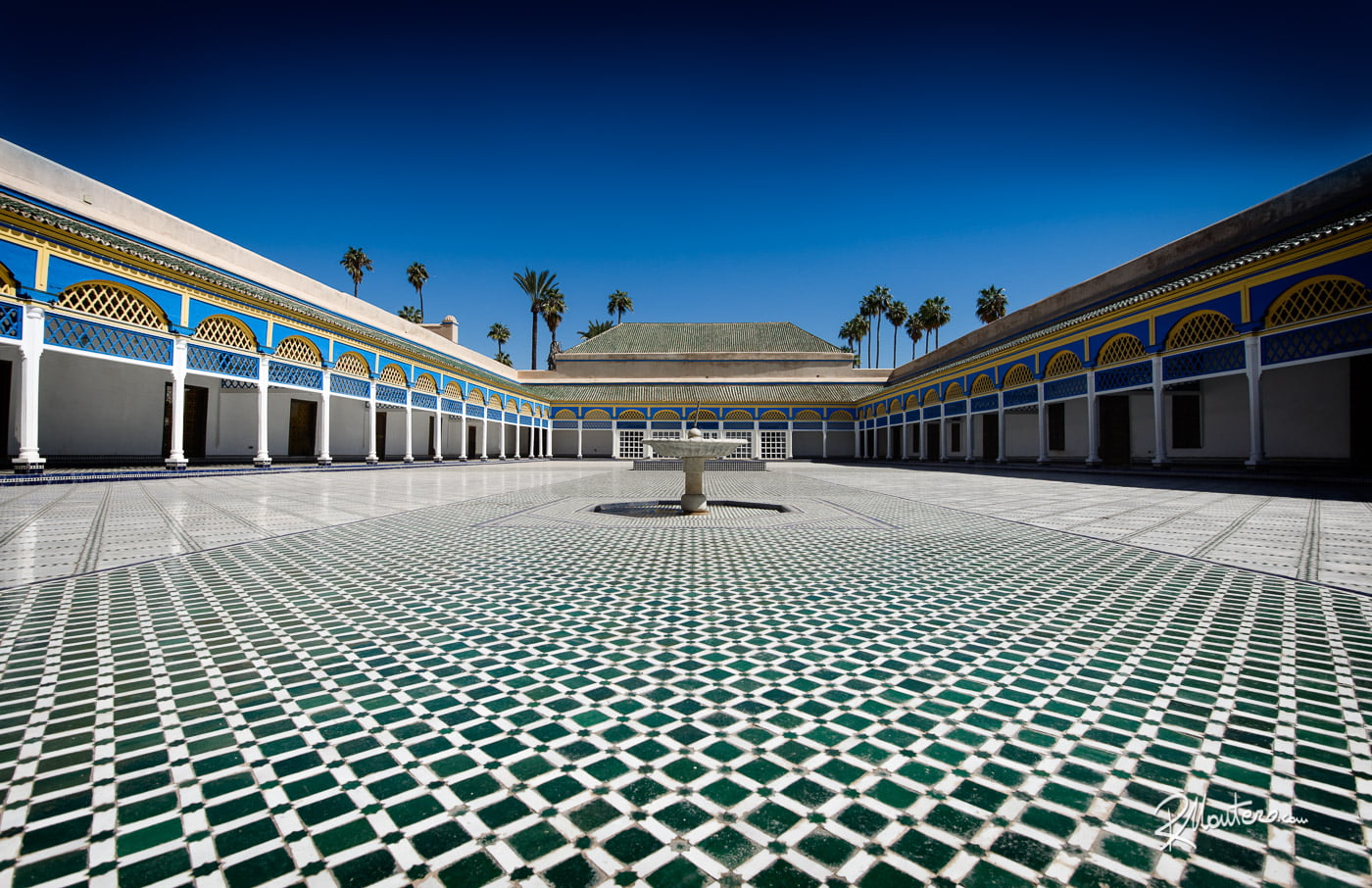
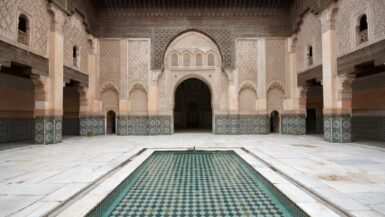
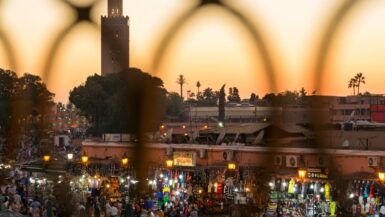
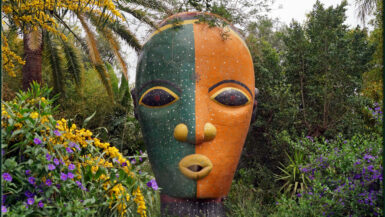
Leave a reply